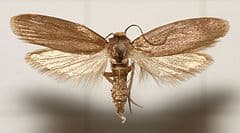
In most species with a sense of hearing, the ability to localise sounds evolved at broadly the same time as hearing itself. However, in the pyraloid moth, a technique to detect specific sounds appears to have developed much later than the basic structure of its ears; moreover, the moths’ ears function independently of each other.
In many situations, the hearing of pyraloid moths is not particularly good, said Strathclyde research director James Windmill, an electrical engineer. "The hearing that moths developed 65 million years ago is a simple but highly effective way for them to avoid and escape predatory bats," he said. "However, pyraloid moths are generally smaller, are not superior flyers and have relatively high hearing thresholds. They may not detect a bat until it is close and appear to defend themselves against bats either by diving towards the ground or by staying still and falling silent."
But for female moths, when it comes to detecting the mating calls of males, the story seems quite different. The membrane structure of the moth's ears responds very sharply to sounds in the 100kHz frequency range arriving at 30° to the axis of the moth’s body. In a paper in the Proceedings Of The National Academy of Sciences, Windmill and his team explain that the ear acts as an asymmetric pressure gradient receiver.
They determined this using 3D laser vibrometry to study the motion of the moth’s eardrum; and concluded that the ears work independently of each other by observing how the moth flew towards the mating call.
"Communication in moths is rare and is, in many cases, restricted to close range courtship, were directional hearing is less of an issue,” Windmill speculated, "but this mechanism may have evolved in this type of moth to enable makes to be found."




Nanogenerator consumes CO2 to generate electricity
Whoopee, they've solved how to keep a light on but not a lot else.